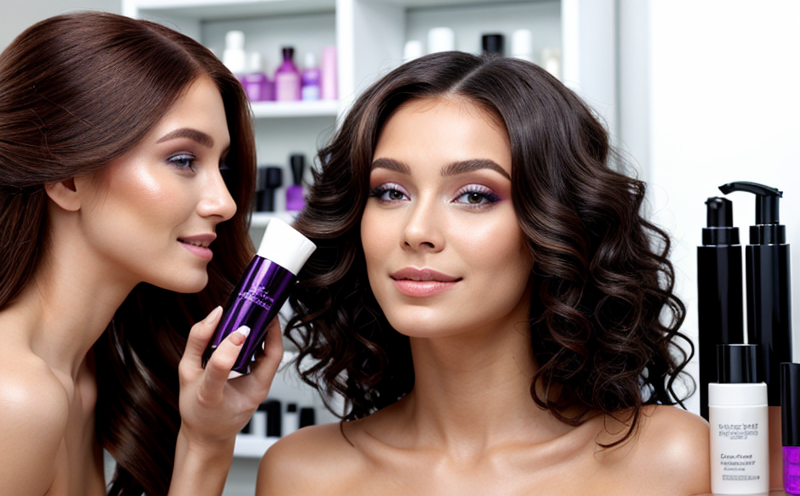Safety Testing of Natural Hair Care Products
The safety testing of natural hair care products is a critical process that ensures consumer protection and compliance with international standards. In this context, quality managers, R&D engineers, and compliance officers must collaborate to ensure the integrity and safety of all formulations used in personal care products.
Natural hair care products are not just about ingredients derived from plants; they also include those that are minimally processed or synthetic but still maintain a natural appearance. Testing these products involves assessing their potential risks, including allergens, irritants, and sensitizers. Regulatory bodies worldwide mandate rigorous testing to ensure that all natural hair care products meet stringent safety standards.
The testing process begins with thorough ingredient evaluation. Natural ingredients can be complex due to variations in raw materials sourced from different regions or seasons. This complexity requires meticulous examination of each component to identify potential allergens and irritants. Regulatory compliance is paramount, especially when dealing with natural products that may contain botanical extracts.
Another crucial aspect of safety testing involves the evaluation of stability and shelf life. Natural ingredients are prone to degradation over time, which can lead to changes in product quality and efficacy. Testing must ensure that the final product remains stable under various environmental conditions, including temperature fluctuations, humidity, and light exposure.
| Parameter | Description |
|---|---|
| Temperature Cycling | Testing the product's stability under extreme temperature changes. |
| Humidity Control | Evaluating how humidity affects the product over time. |
| Sunlight Exposure | Determining the impact of light on product integrity and efficacy. |
Microbiological testing is another essential step in ensuring the safety of natural hair care products. Microbes can contaminate raw materials or finished products, leading to infections or other health issues. The microbiological assessment includes checking for bacteria, fungi, and yeasts that could pose a risk.
| Test Method | Purpose |
|---|---|
| Bacterial Count | Measuring the number of viable bacteria present. |
| Fungal and Yeast Count | Evaluating fungal and yeast levels in the product. |
| Microbial Limits Testing | Ensuring that the microbial count does not exceed safe limits. |
In addition to these tests, toxicological assessments are conducted to ensure that natural hair care products do not contain harmful substances. These tests may include dermal irritation and sensitization studies using appropriate animal models or in vitro methods. The goal is to identify any potential adverse effects on human health.
Why It Matters
The importance of safety testing cannot be overstated, as it directly impacts public health and consumer trust. Regulatory compliance ensures that products meet the necessary standards set by governing bodies such as the European Union Cosmetics Regulation (EU) No 1223/2009, which mandates specific tests for cosmetic ingredients.
Consumer trust in natural hair care products is essential for brand reputation and market success. A single safety issue can lead to product recalls and damage to a company's image. Therefore, rigorous testing helps maintain consumer confidence and loyalty.
- Regulatory Compliance: Ensures adherence to international standards like ISO, ASTM, EN, IEC.
- Consumer Trust: Builds confidence in product safety and quality.
- Market Differentiation: Highlights the commitment to high-quality and safe products.
Environmental and Sustainability Contributions
The testing of natural hair care products also contributes positively to environmental sustainability. By ensuring that products are free from harmful chemicals, the industry helps reduce pollution and protect ecosystems. Sustainable practices in formulation development can lead to reduced waste generation and more efficient resource use.
- Reduced Use of Harsh Chemicals: Minimizing the inclusion of non-natural ingredients decreases environmental impact.
- Eco-Friendly Packaging: Natural products often come with packaging that is recyclable or biodegradable, further supporting sustainability.
- Promoting Renewable Resources: Utilization of plant-based raw materials supports sustainable agriculture and forestry practices.
Use Cases and Application Examples
The testing of natural hair care products is applicable across various sectors, including pharmaceuticals, cosmetics, and personal care. This service ensures that formulations comply with regulatory requirements and meet the expectations of consumers seeking safe and effective products.
| Industry Sector | Product Category | Testing Requirements |
|---|---|---|
| Cosmetics | Hair Conditioners | Assessment of pH levels, microbiological quality. |
| Personal Care | Natural Shampoos | Evaluation for allergens and irritants. |
| Pharmaceuticals | Hair Growth Serums | Toxicological assessments, stability testing under various conditions. |





